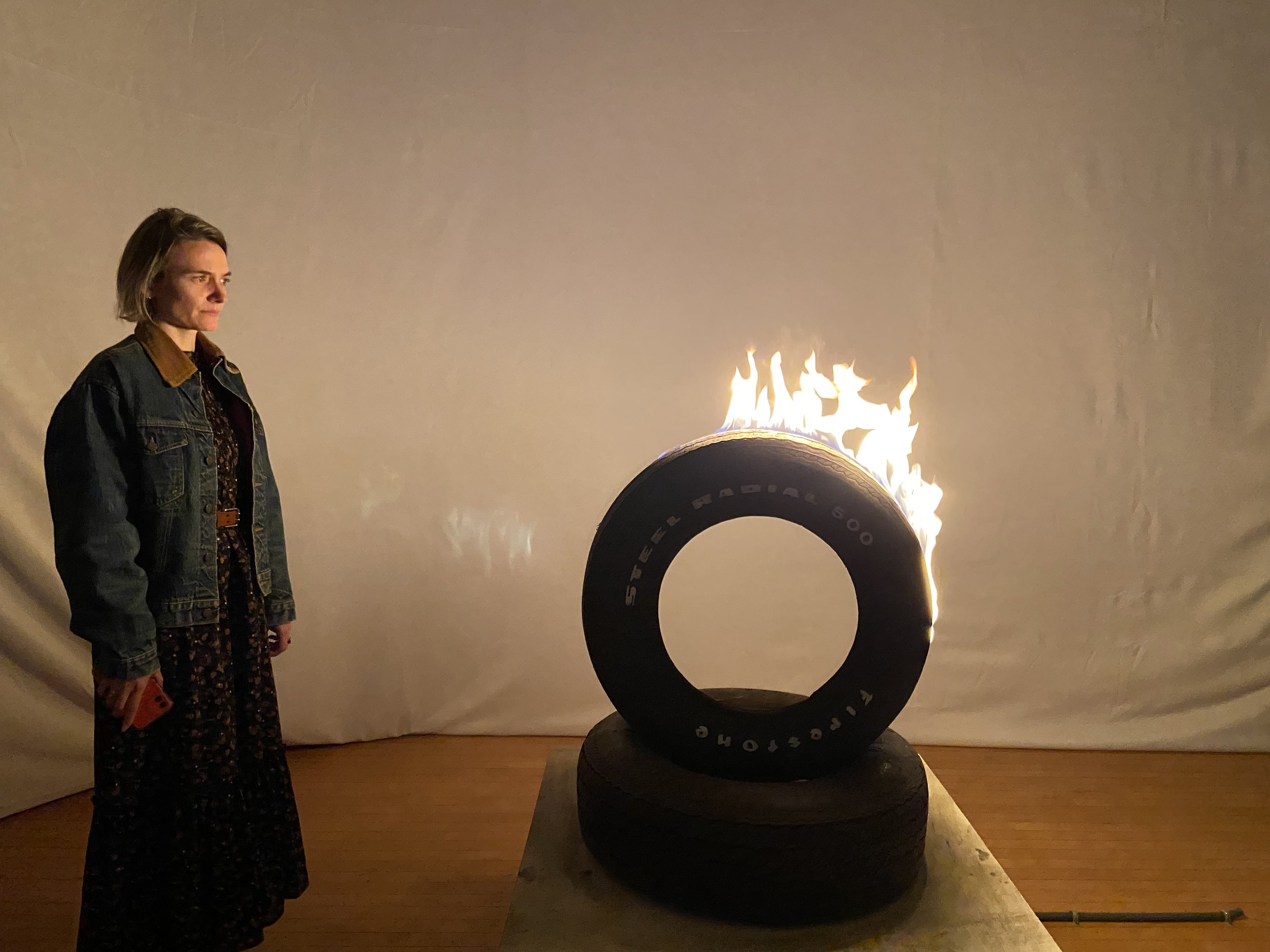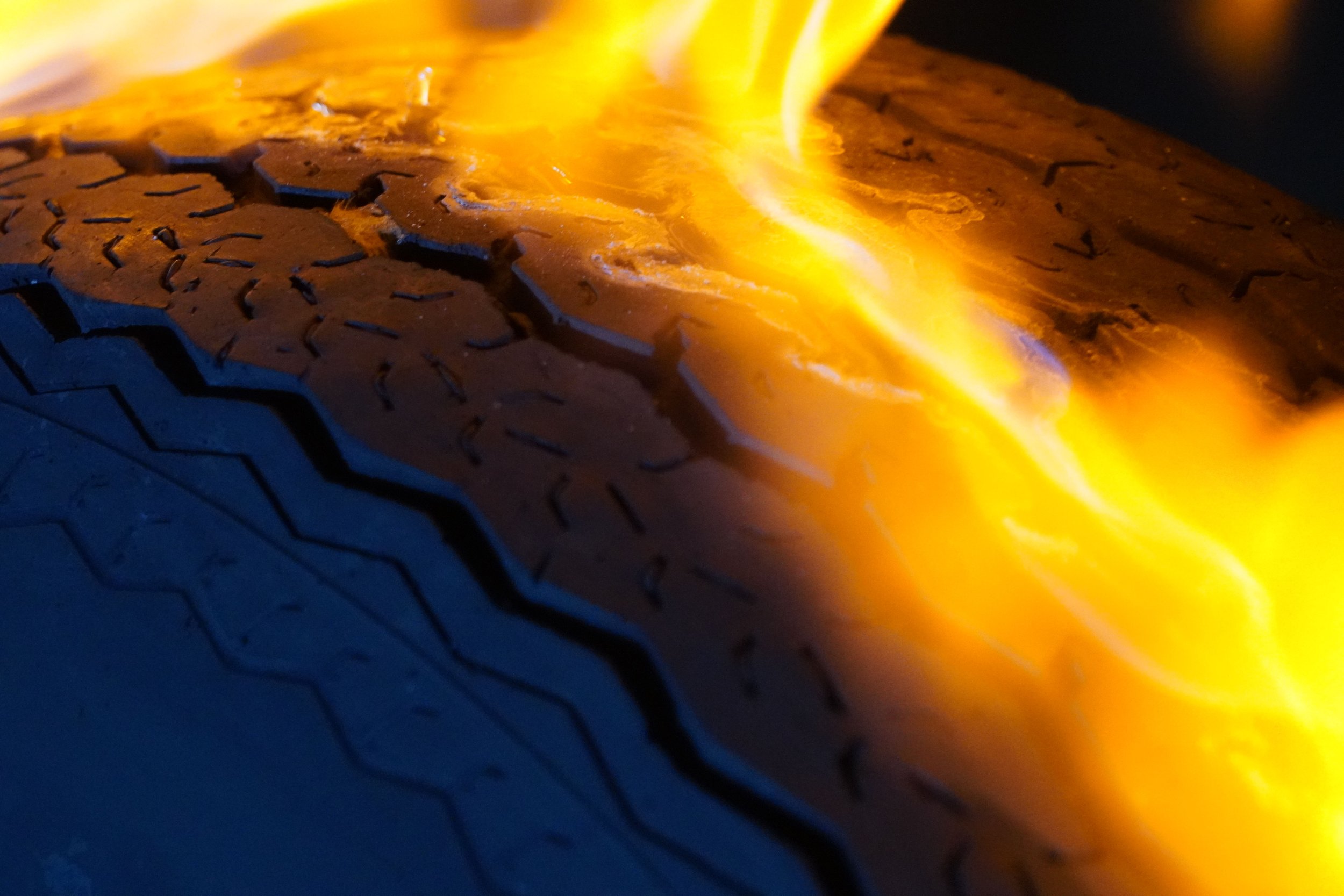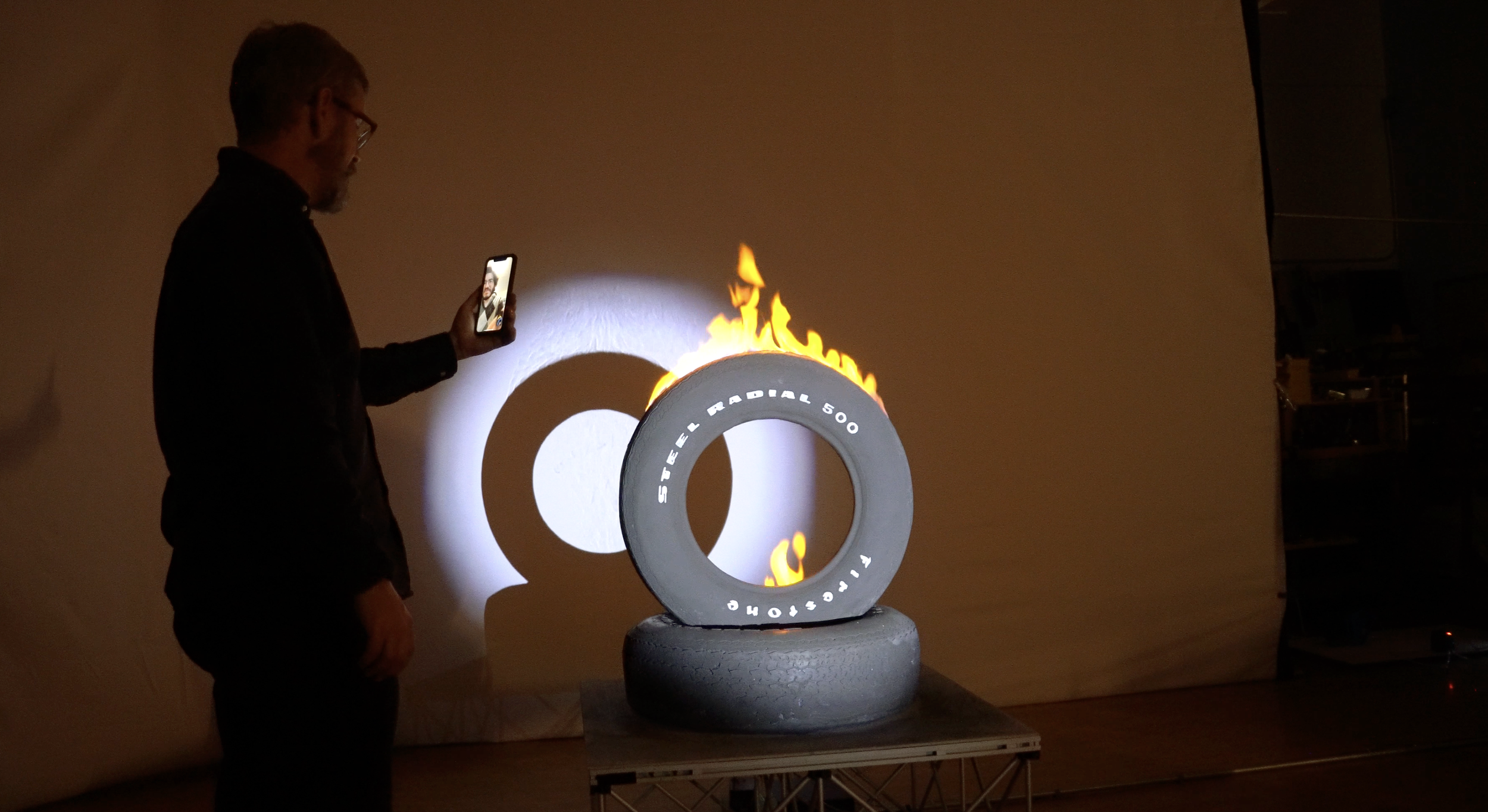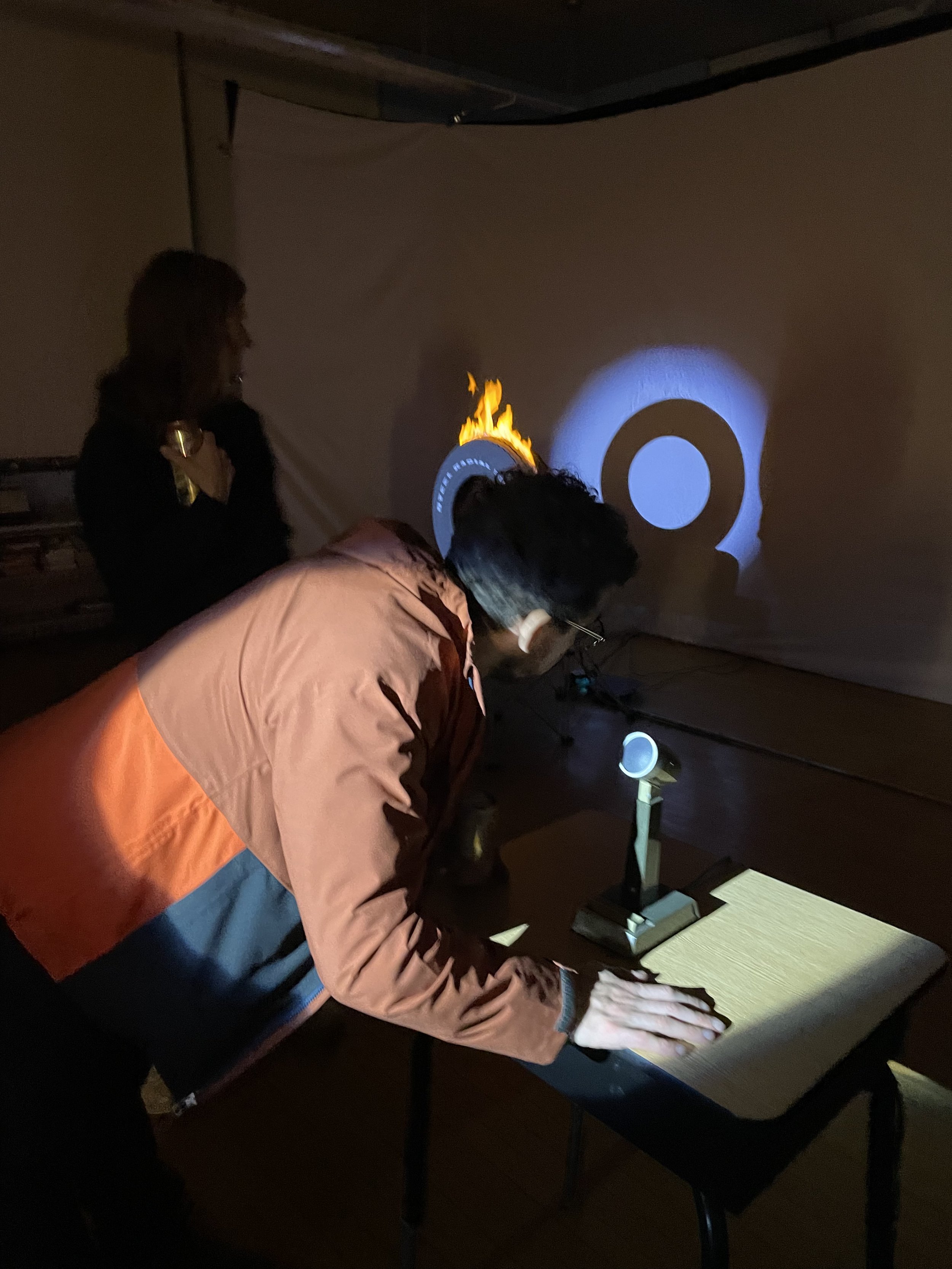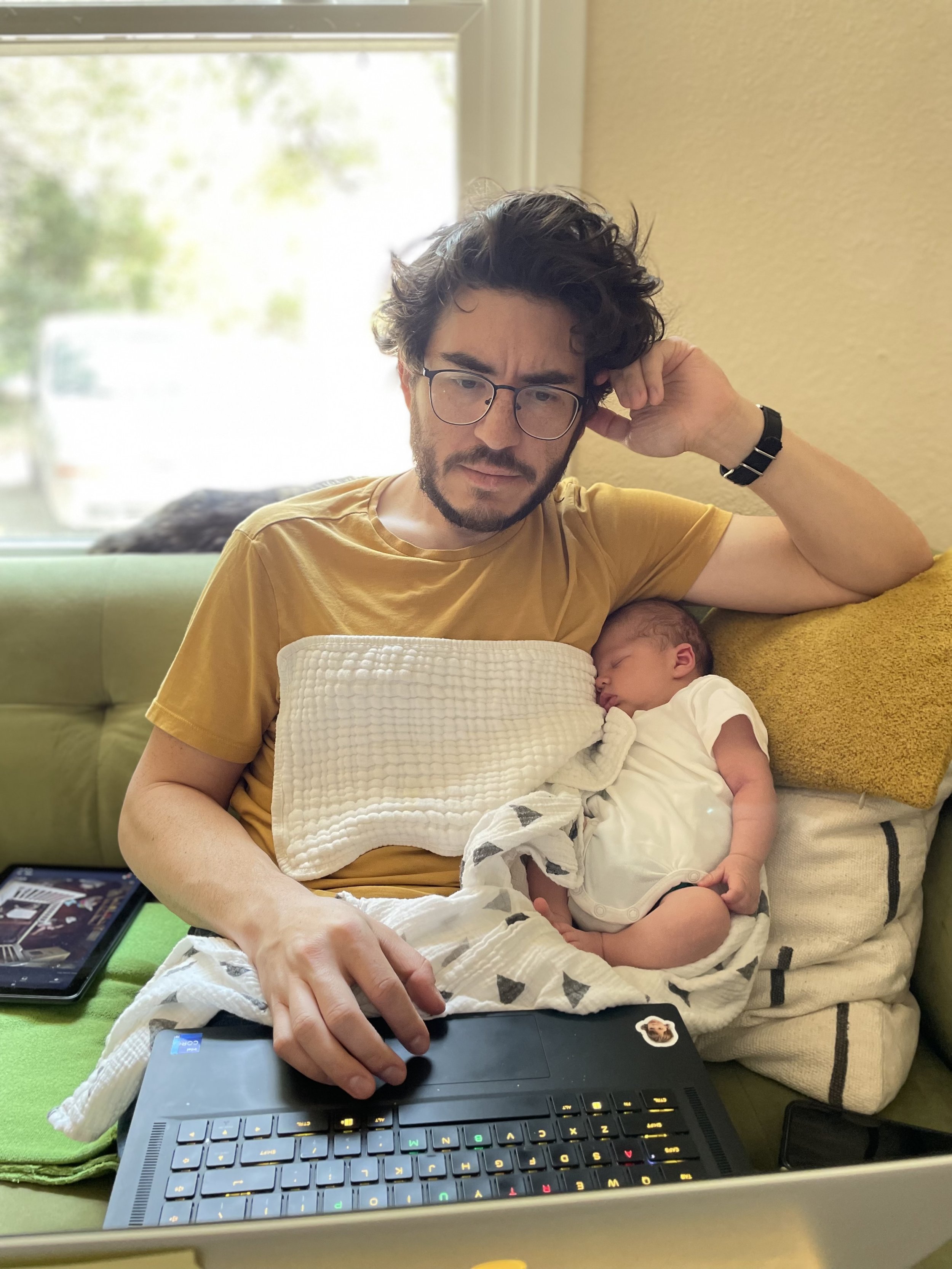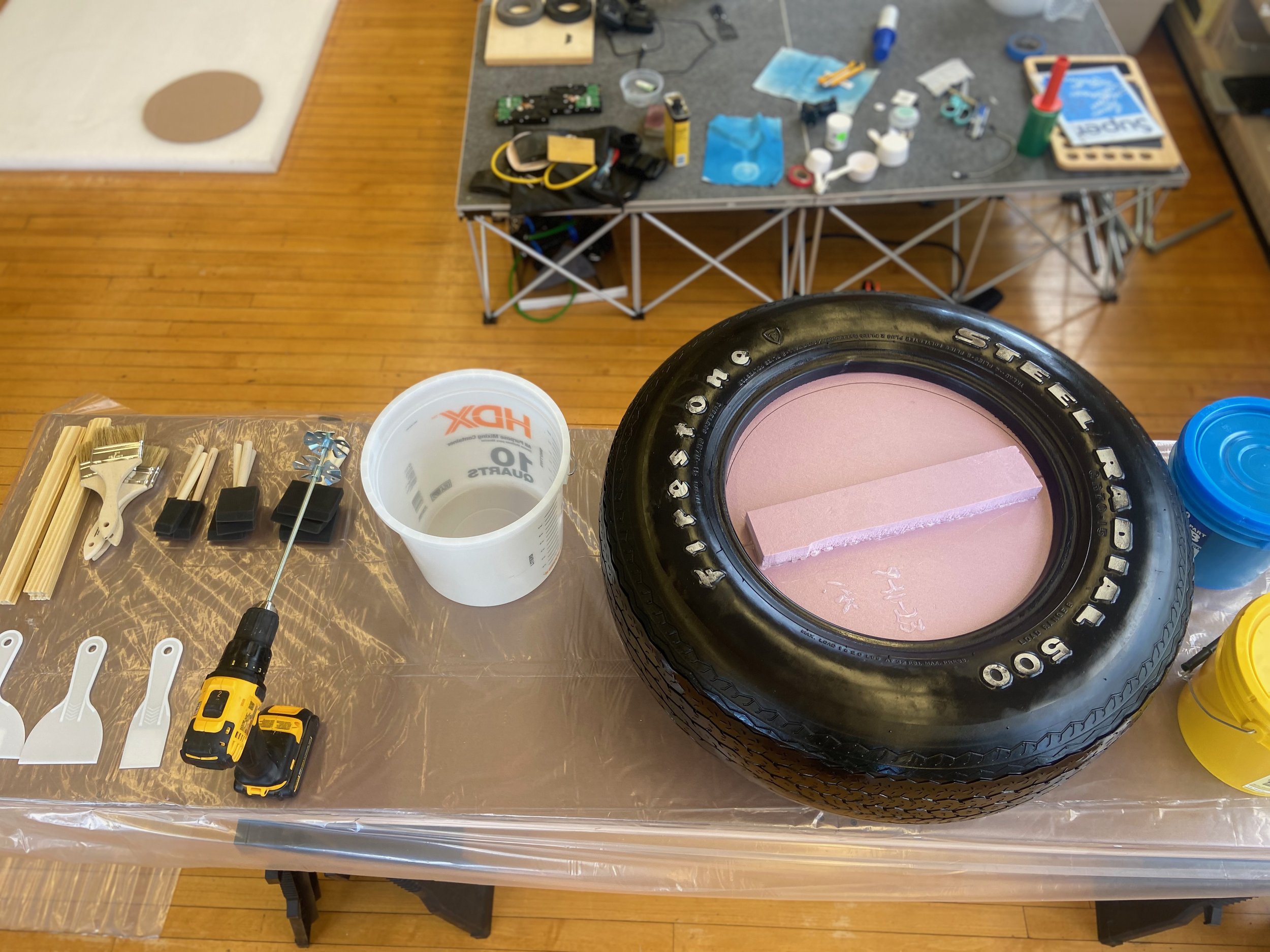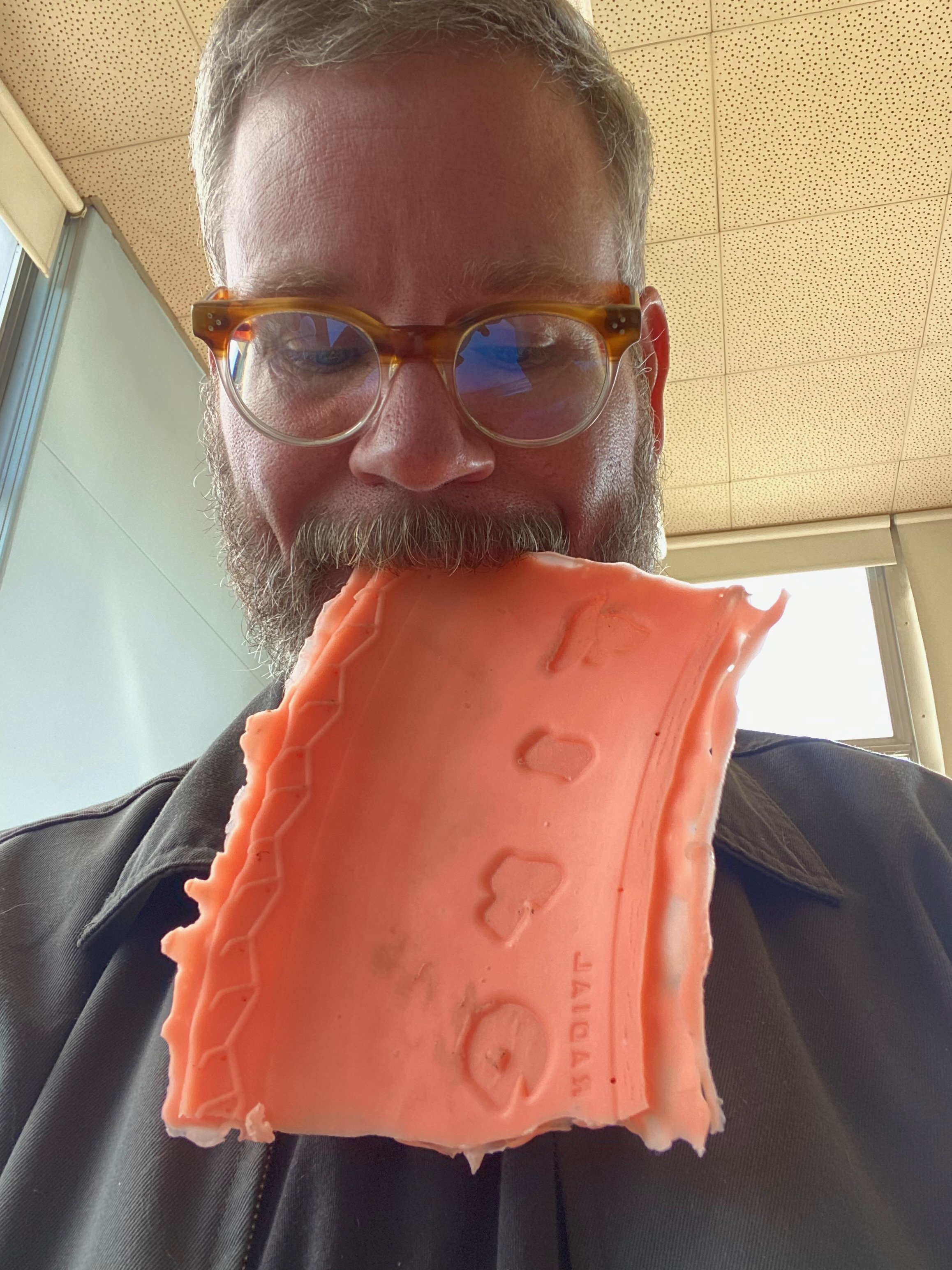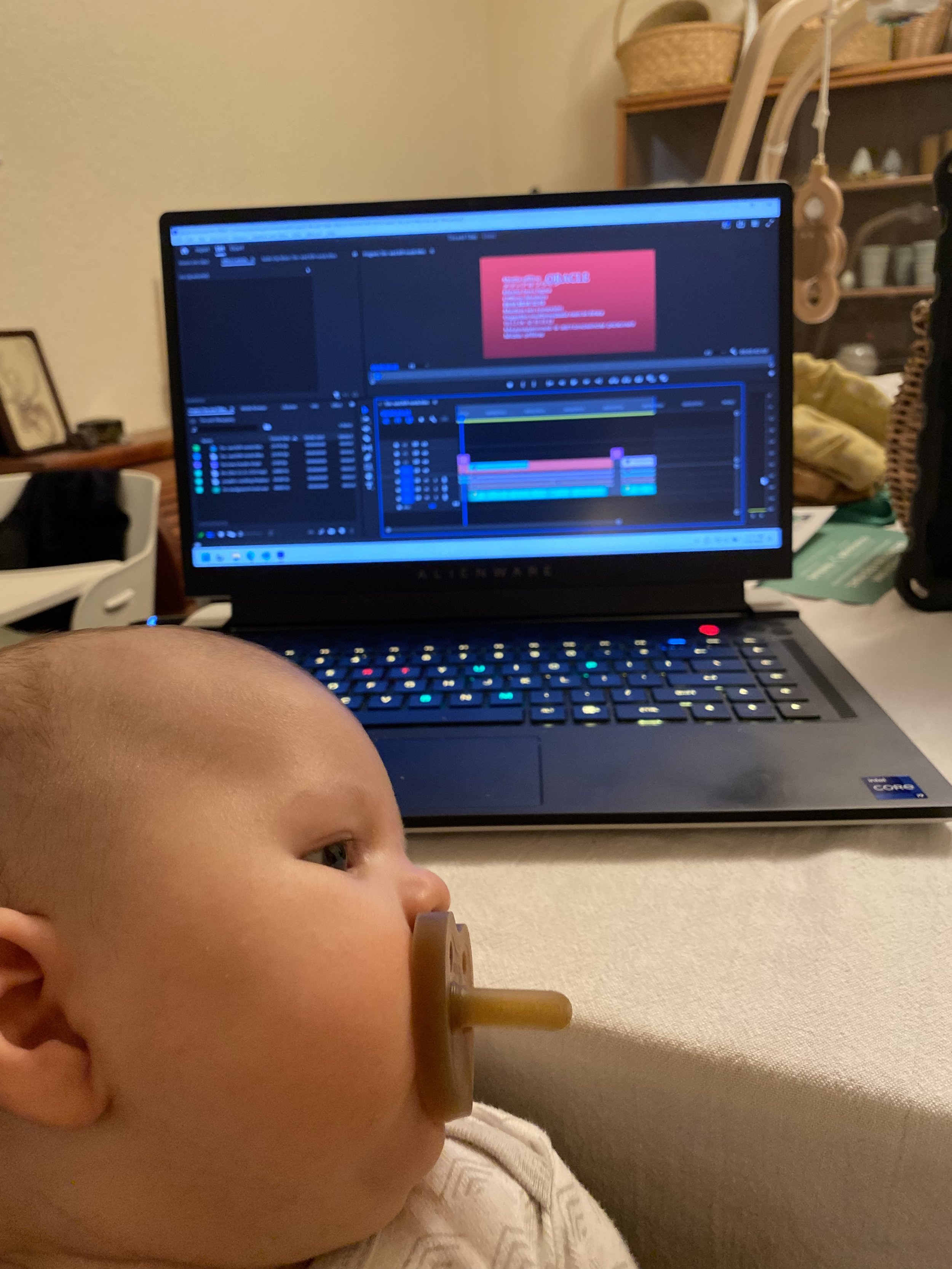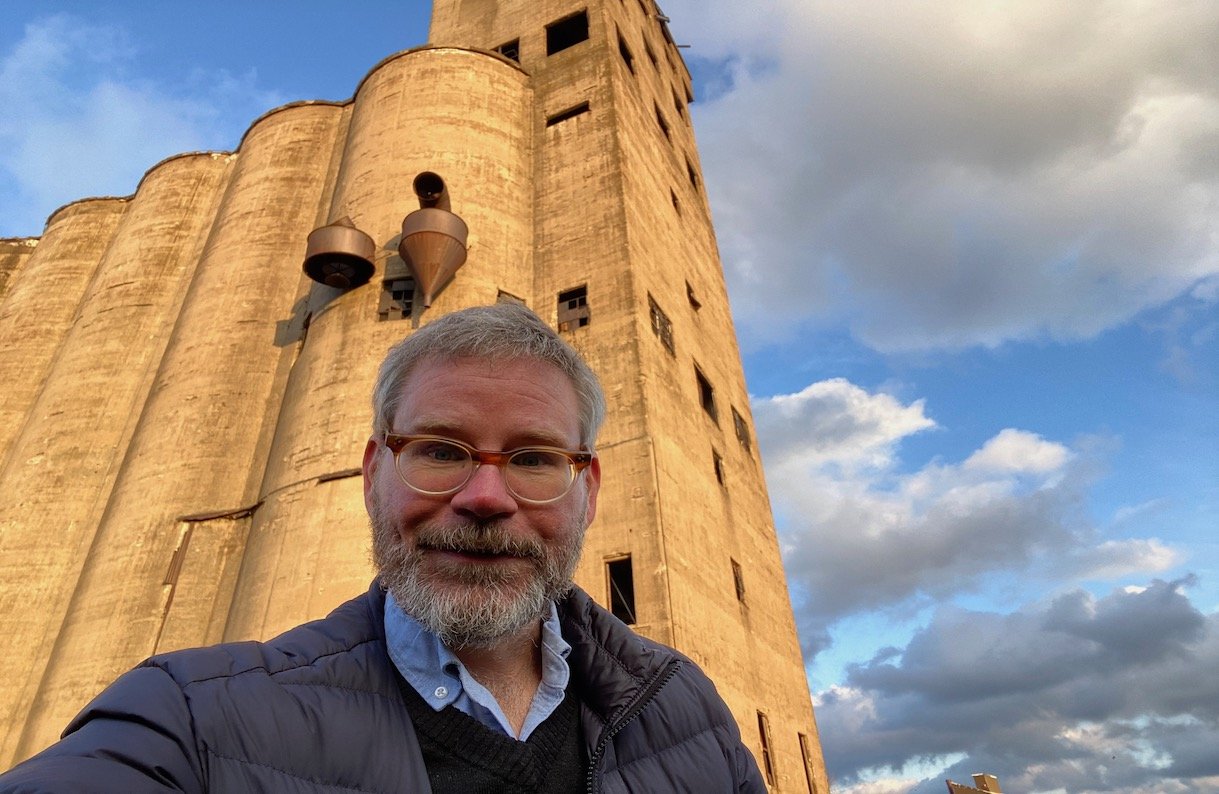Oracle is an interactive artwork featuring a talking flame emanating from a burning tire.
The burning tire functions as a climate change oracle that viewers can approach and ask their questions about environmental crises and the changes in the world around them.
Taking a lesson from the environmental movement, and from the history of oracles as sites where uncertainty can be exchanged for action and direction, Oracle offers a mysterious spectacle whose humor and strangeness are designed to upend cynicism and create space for voices from the climate justice movement.
The talking flame both talks and comprehends; it converses through an artificially intelligent platform built upon a mesh-work of media accounts and personal narratives linked by climate change. It sifts through a diverse spectrum of perspectives of activists and climate experts.
Oracle was conceived and created by Matt Kenyon and Nick Bontrager, as part of Fine Acts Labs. This global initiative unites artists and technologists to prototype innovative solutions for specific issues over the course of a weekend. Teams benefit from the guidance of a dedicated group of mentors and experts, with the most promising ideas being produced by Fine Acts.
“As a founding civil servant in the Environmental Protection Agency (EPA), my grandfather once shared with me a powerful moment from 1969. It was an image published by Time Magazine, capturing the Cuyahoga River in an unusual state - not flowing with water, but engulfed in flames. From up river in Akron, the US tire capital, the river had been polluted from years of industrial waste, and it caught fire on a Sunday morning in June. The media attention in 1969 helped galvanize public support for a series of ambitious pollution control activities eventually resulting in the Clean Water Act and later, the establishment of the federal Environmental Protection Agency.
The flaming river acted as an oracle: it foretold of devastation in the near future and galvanized the actions that were needed to avoid it.
The sight of a burning tire is a powerful image encapsulating both the human impact on the environment and the urgent need for climate action.”
The June 10-11, 2023 edition of Fine Acts Labs had a laser focus on climate equity and justice. During this very weekend, smoke from intense wildfires in Canada blanketed the upper Midwest, casting fiery-red skies and dangerous air quality across both Canada and several U.S. states. In Fort Worth, TX, where Nick resides, temperatures soared above 100 degrees Fahrenheit an astonishing 250 times, marking yet another nearly unprecedented historic event.
Amidst the dark backdrop of climate-related challenges, there were also moments of joy and hope. Nick and his wife Jessica welcomed their second child, Felix, into the world, reminding us that even in the face of adversity, life and optimism persist.
The tire
Oracle's tire-form is a cast replica of an original 1977 Firestone Steel Radial 500 car tire assembled in Akron, Ohio 46 years ago. This tire has a dark historical significance, as it was the very same make and model at the center of the largest tire recall in history - the 1978 Firestone Steel Radial 500 tire recall, a major automotive safety crisis that affected 14.5 million tires and was associated with numerous deaths and injuries.
A detailed mold was made from the original tire and a cast consisting of a mix of refractory cement, basalt fibers, and carbon black, was made ensuring the Oracle is capable of withstanding direct flames and high temperatures.
The flame
Oracle's flame draws its life force from a unique blend of ethanol meticulously crafted from sources that prioritize sustainability. It's important to acknowledge that while bioethanol serves as a valuable step towards more eco-friendly fuel options, it is not without its imperfections.
The Plasma Speaker
Within the Oracle sculpture, the plasma speaker is a fusion of art and historical technology. Invented by British engineer William Duddell in 1901, it uses an electric arc to generate sound.
Approaching Oracle, visitors experience both the burning tire and the mysterious sounds from the plasma speaker. This unique sensory encounter adds intrigue to the sculpture, prompting reflection on pressing environmental questions.
Sound is produced from the tire's body through a plasma arc speaker. A variable plasma arc affects air pressure, creating sound, serving as the "voice" of the Oracle.
The Oracle's narrative contemplates the tire's role as a seer, trickster, companion, or a relic of time, sparking curiosity about its past and the conversations it has silently witnessed.
Custom Software
A custom software system is in place to meticulously track, gather and parse the questions posed by Oracle's inquisitive visitors. For those whose queries align with the profound themes of climate change, this software springs into action, offering near-real-time responses that foster engaging conversations and illuminate the intricate tapestry of climate-related topics.
Installation site
Oracle was installed and exhibited within the Marine A Grain Elevator at Buffalo’s historic Silo City. The first of its kind silo, built as a transfer elevator, was constructed in 1925 and is made up of 120 feet of solid concrete and is currently used for select art cultural events.
The gallery version of the installation will be exhibited at the Ritter Art Gallery / Florida Atlantic University (January 18 – March 1, 2024). This version uses a special combination of lights and water vapor fog for galleries who can not have an open flame. Stay tuned!
All photos and videos: Matt Kenyon and Nick Bontrager
THE ARTISTS
Matt Kenyon is a new media artist and designer. Kenyon’s work has been exhibited nationally and internationally in such venues as the Museum of Modern Art, New York, MOCAD Detroit, Science Gallery Dublin, Centre de Cultura Contemporània de Barcelona, and the International Print Center. He is a TED Fellow, a MacDowell Fellow, and his work has been awarded the FILE Prix Lux. His work has been featured in The New York Times, Wired, and Gizmodo, and has also appeared in edited volumes such as A Touch of Code (Gestalten Press) and Adversarial Design (MIT Press). He lives and works in Buffalo, New York, where he is an Associate Professor in the Department of Art at the University at Buffalo, and part of PLATFORM, UB's socially engaged design studio.
Nick Bontrager is an interdisciplinary artist and technologist whose work and research explores the physical and conceptual nature of the moving image, game-based interactions and exchanges, and the idea of replicas or facsimiles as tools of preservation or understanding. He is currently an Associate Professor of New Media Art at Texas Christian University in Fort Worth, Texas. He recently completed the video game Myst after nearly 30 years of failed attempts.



